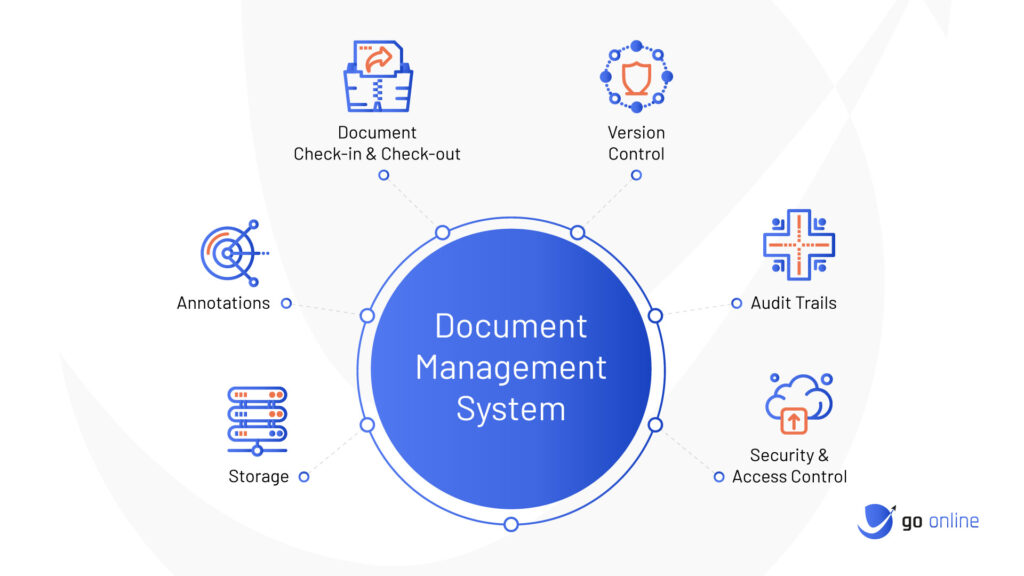Welcome, fellow insurance professionals! Today, we’ll delve into the importance of insurance document management solutions in streamlining insurance operations. Effective document management in insurance industries is not just about organization; it’s about enhancing productivity, enabling collaboration, ensuring compliance, and optimizing efficiency. By adopting robust document management practices, we can bid farewell to manual processes, reduce errors, and unlock the true potential of our insurance documents.
Let’s explore the key challenges, practical strategies, and embrace a future where documents are powerful assets that drive our success.
Management of Insurance Documentation

Managing insurance documentation is a critical aspect of efficient operations in the insurance industry. From policies and claims to customer records and legal forms, the sheer volume and complexity of documents can become overwhelming without a systematic approach.
By streamlining document workflows, ensuring version control, and utilizing intelligent search capabilities, insurance professionals can enhance productivity, reduce errors, and improve collaboration. Furthermore, robust document management practices help maintain regulatory compliance, safeguard sensitive data, and demonstrate adherence to industry standards.
Embracing modern document management solutions enables insurance organizations to optimize efficiency and unlock the full potential of their valuable documents.
Why is Documentation Important in Insurance?
Documentation plays a pivotal role in the insurance industry for several compelling reasons. Firstly, documentation serves as a comprehensive record of policies, claims, and customer interactions with insurance company, ensuring transparency and accountability throughout the insurance process. Accurate and thorough documentation enables insurers to effectively assess risks, process claims efficiently, and make informed decisions.

Moreover, documentation is crucial for compliance purposes, helping insurance companies adhere to regulatory requirements and demonstrate adherence to industry standards. By maintaining organized and accessible documentation, insurers can enhance customer service, improve compliance, streamline operations, and mitigate legal and compliance risks.
What is an Insurance Documentation Management System?

An insurance documentation management system refers to a specialized software or platform designed to streamline the handling, organization, and storage of insurance-related documents.
This system provides insurance professionals with a centralized and digitized repository to create, capture, store, retrieve, and manage a wide range of documents, including policies, claims, customer records, legal forms, and compliance documentation.
An effective insurance documentation management system offers features such as automated workflows, version control, metadata tagging, and intelligent search capabilities, enabling seamless document collaboration, efficient retrieval, and enhanced productivity. By leveraging an insurance documentation management system, insurers can optimize operational efficiency.
Functions of the Insurance Document Management System

Document Storage and Retrieval
The insurance document management system provides a centralized repository for storing and organizing various insurance-related documents. It ensures easy and efficient retrieval of documents, eliminating the need for manual searching through physical files or multiple digital folders.

Document Sharing and Collaboration
This function allows seamless collaboration among insurance team members. The document management software for insurance the system enables sharing documents with colleagues, departments, or external stakeholders, facilitating efficient information exchange and real-time collaboration.
Multiple users can work on the same document simultaneously, making it easier to review, edit, and track changes, and approvals, thereby improving teamwork and accelerating decision-making processes.

Document Tracking and Version Control
The system tracks the history and changes made to documents, providing a secure and detailed audit trail. This functionality ensures transparency and accountability by recording who made modifications secure documents, when they were made, and what changes were implemented.
Version control capabilities enable users to manage different iterations of a document, ensuring that the most up-to-date version of files is always accessible and reducing the risk of errors or confusion.

Workflow Management
The insurance company’ document management system automates and streamlines document workflows. It allows users to define and implement standardized processes for document creation, review, approval, and distribution. By automating these workflows, the insurance agency’ system reduces manual intervention, eliminates bottlenecks, and enhances a company’ overall efficiency.

Security and Compliance
Security and compliance are paramount in the insurance industry, considering the sensitive nature of the data involved. The document management system incorporates robust security features to protect confidential information, such as access controls, encryption, and user authentication.
Advantages of the Insurance Document Management System

Enhanced Efficiency and Productivity
The insurance document management system streamlines document-related business processes, eliminating manual tasks and reducing administrative burdens. By digitizing and automating workflows, insurance professionals can save valuable time and focus on more strategic business tasks. With quick document retrieval, remote access, streamlined collaboration, and simplified workflows, efficiency and productivity are significantly improved, enabling teams to accomplish more in less time.
Improved Document Organization and Accessibility
The system offers insurance agencies a centralized repository for storing and organizing insurance and other related documents together. Through efficient categorization, metadata tagging, and intelligent search capabilities, the process of finding and retrieving specific documents becomes effortless. Insurance professionals can access critical information whenever needed, leading to quicker decision-making and better customer service.
Enhanced Collaboration and Communication
With document sharing and collaboration as key features, the insurance document management system fosters seamless teamwork, workflow and communication. Multiple users can collaborate on documents in real-time, making it easier to share insights, review documents, and track changes. This collaborative environment enhances communication within teams, departments, and across different locations, leading to better coordination and a more connected workforce.
Heightened Data Security and Compliance
The system incorporates robust security measures to safeguard sensitive insurance data. Access controls, encryption, and user authentication mechanisms protect documents from unauthorized access or data breaches. Furthermore, the document management system aids in regulatory compliance by ensuring adherence to industry-specific regulations, privacy laws, and data protection requirements.
Reduced Physical Storage Costs and Disaster Recovery
The insurance document management system significantly reduces the need for physical storage space and associated costs. By transitioning to digital documents, the system eliminates the need for extensive file cabinets and off-site storage facilities. Additionally, it provides disaster recovery capabilities, allowing for automated backups and quick document restoration.
How Can Document Management Help?
Document management plays a crucial role in supporting insurance companies in various ways. By implementing an efficient document management system, insurance companies can streamline their operations, improve productivity, and enhance customer service.
Document management enables easy storage and retrieval of policy documents, claims information, and customer records, eliminating the need for manual filing and reducing the risk of document loss or misplacement. It also facilitates seamless collaboration among team members, enabling efficient document sharing, editing, and version control.
Moreover, document management systems help track and monitor document activities, ensuring compliance with regulatory requirements and enhancing data security. With organized and accessible documentation, insurance companies can enhance efficiency, provide better customer experiences, and maintain accurate and up-to-date records critical for decision-making and audits.

What Does Document Management Give You?
Document management can provide you with a host of valuable benefits. It offers enhanced control and organization over documents, making it easier to categorize, search, and retrieve critical information. With centralized repositories and intelligent search capabilities, document management ensures quick and efficient access to documents when needed. It fosters collaboration and teamwork by enabling seamless document sharing, version control, and real-time collaboration among team members.
Document management enhances security and compliance by implementing measures such as access controls and encryption to protect sensitive data.
Conclusions
In the realm of insurance operations, effective document management plays a crucial role in streamlining processes and improving overall efficiency. By implementing a robust insurance document and management system for insurance and, organizations can achieve several advantages.
These include enhanced control and organization of documents, improved accessibility to critical information, streamlined collaboration and teamwork, heightened security and compliance, and increased efficiency and productivity.
The system enables insurance professionals to store, retrieve, and share documents efficiently, reducing manual tasks and promoting seamless collaboration. By using document driven processes leveraging these benefits, insurance organizations can enhance customer service, and gain a competitive edge in the insurance industry.










